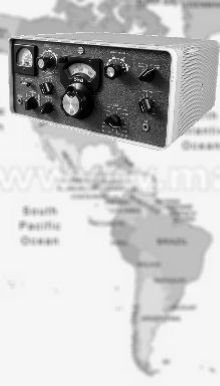작성자: KE6ZSA
Updated on 09/21/2010
§97.119 Station identification.
(a) Each amateur station, except a space station or telecommand station, must transmit its assigned call sign on its transmitting channel at the end of each communication, and at least every ten minutes during a communication, for the purpose of clearly making the source of the transmissions from the station known to those receiving the transmissions. No station may transmit unidentified communications or signals, or transmit as the station call sign, any call sign not authorized to the station.
(b) The call sign must be transmitted with an emission authorized for the transmitting channel in one of the following ways:
(1) By a CW emission. When keyed by an automatic device used only for identification, the speed must not exceed 20 words per minute;
(2) By a phone emission in the English language. Use of a phonetic alphabet as an aid for correct station identification is encouraged;
(3) By a RTTY emission using a specified digital code when all or part of the communications are transmitted by a RTTY or data emission;
(4) By an image emission conforming to the applicable transmission standards, either color or monochrome, of §73.682(a) of the FCC Rules when all or part of the communications are transmitted in the same image emission.
(c) One or more indicators may be included with the call sign. Each indicator must be separated from the call sign by the slant mark (/) or by any suitable word that denotes the slant mark. If an indicator is self-assigned, it must be included before, after, or both before and after, the call sign. No self-assigned indicator may conflict with any other indicator specified by the FCC Rules or with any prefix assigned to another country.
(d) When transmitting in conjunction with an event of special significance, a station may substitute for its assigned call sign a special event call sign as shown for that station for that period of time on the common data base coordinated, maintained and disseminated by the special event call sign data base coordinators. Additionally, the station must transmit its assigned call sign at least once per hour during such transmissions.
(e) When the operator license class held by the control operator exceeds that of the station licensee, an indicator consisting of the call sign assigned to the control operator's station must be included after the call sign.
(f) When the control operator who is exercising the rights and privileges authorized by §97.9(b) of this Part, an indicator must be included after the call sign as follows:
(1) For a control operator who has requested a license modification from Novice to Technician Class: KT;
(2) For a control operator who has requested a license modification from Novice, Technician or Technician Plus Class to General Class: AG;
(3) For a control operator who has requested a license modification from Novice, Technician, Technician Plus, General, or Advanced Class operator to Amateur Extra Class: AE.
(g) When the station is transmitting under the authority of §97.107 of this part, an indicator consisting of the appropriate letter-numeral designating the station location must be included before the call sign that was issued to the station by the country granting the license. For an amateur service license granted by the Government of Canada, however, the indicator must be included after the call sign. At least once during each intercommunication, the identification announcement must include the geographical location as nearly as possible by city and state, commonwealth or possession.





